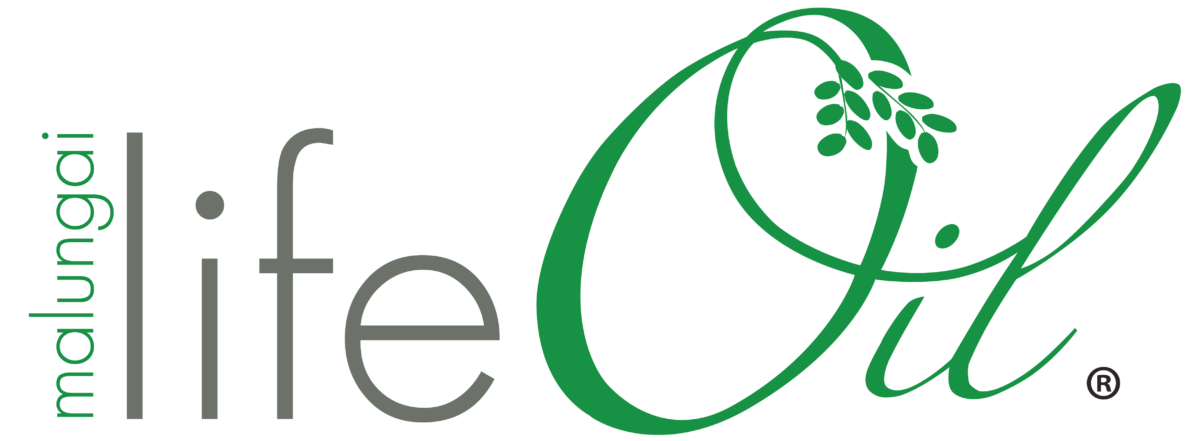
Have you wondered why malunggay for maternal health is important?
“No other health disparity is so stark; virtually every woman who dies giving birth lives in a poor country.” – LiyaKebede, Ethiopian-born model, actress, and maternal health advocate
Maternal death is the leading cause of death and disability among women of reproductive age in developing countries. It is defined by the World Health Organization (WHO) as the death of a woman while pregnant or within 42 days of termination of pregnancy, regardless of the cause of death. This is why malunggay for maternal health is important to know.
Everyday, there are 830 women who die due to complications of pregnancy and childbirth. Maternal mortality statistics have also shown a very huge gap between rich and poor.
Most of the reported maternal death cases occurred in developing countries, such as Sub-Saharan Africa, which has 550 reported maternal death cases and 180 in Southern Asia, compared to only 5 reported maternal death cases in developed countries.
The risk of women of dying due to maternal death in developing countries is 33% higher compared to the women of developed countries.
Based on a 2010 study published by the US National Library of Medicine, National Institutes of Health, “most developing countries face tremendous challenges in the implementation of interventions such as availability of unreliable data, shortage in human and financial resources, as well as limited political commitment.”
This assertion was upheld by the British Medical Bulletin, a multidisciplinary publication of high quality reviews, citing that “inadequate information” is the main reason behind the prevalence of maternal death cases in poor countries.
“The absence of good information on the extent of the burden of maternal ill health resulted in its relative neglect by the international health community for many years. Maternal deaths are too often solitary and hidden events that go uncounted. The difficulty arises not because of lack of clarity regarding the definition of a maternal death, but because of the weakness of health information systems and consequent absence of the systematic identification and recording of maternal deaths,” said British Medical Bulletin.
It is said that malunggay for maternal health is very effective.
PRIMARY CAUSES OF MATERNAL DEATH
The primary causes of maternal death are classified into two categories: direct and indirect causes.
Direct causes, accounting for 80% of maternal deaths, are related to obstetric complications of pregnancy, labor, delivery, and the post-partum periods.
 Indirect causes, on the other hand, account for the 20% of maternal deaths. These are related to pre-existing medical conditions that may be aggravated by the physiologic demands of pregnancy. (Read more here: http://healthandrights.ccnmtl.columbia.edu/.) This should not be the case.
Indirect causes, on the other hand, account for the 20% of maternal deaths. These are related to pre-existing medical conditions that may be aggravated by the physiologic demands of pregnancy. (Read more here: http://healthandrights.ccnmtl.columbia.edu/.) This should not be the case.
INTERVENTIONS TO PREVENT MATERNAL MORTALITY
In 90 percent of maternal mortality cases today, death is completely preventable, says the Center for Reproductive Rights, a global advocacy organization that seeks to advance reproductive rights.
Here are some best practices provided by The Public Health at Glance, a website that publishes core basic health functions, nutrition, population preventive, and curative services, on how developing countries can prevent and reduce maternal mortality: (Read more here: web.worldbank.org.)
- Ensure Skilled Care/Attendance at Delivery and Strengthen Health Systems. Skilled care or attendance refers to the process by which a pregnant woman and her infant are provided with adequate care during pregnancy, labor, birth, and the postpartum and immediate newborn periods, whether the place of delivery is the home, health center, or hospital.
- In order for this process to take place, the attendant must have the necessary skills and must be supported by an enabling environment at various levels of the health system. By ensuring skilled care/attendance, it will help reduce delays in recognizing and managing complications of pregnancy and delivery.
- Encourage Delayed Marriage and First Birth for Adolescents.Girls aged 15-19 are twice as likely to die from childbirth as women in their twenties; those below the age of 15 are five times as likely.
- The solution is to ensure secondary school education for girls and discourage early marriage by setting a minimum legal age of marriage of at least 18 for girls. Efforts should focus on changing individual and societal motivations for early childbearing. Education and employment opportunities play a critical role in providing alternatives to early motherhood.
- Address Unwanted and Poorly Timed Pregnancies. Promote appropriate array of high quality, consumer-oriented family planning information, counseling, and services in benefits/service packages offered by public and private providers, and extend these services to hard-to-reach groups (youths, poor rural and urban people) through outreach and social marketing programs.
- Provide guidance on contraceptive methods to help women avoid future unwanted pregnancies. Ensure birth intervals of at least 24 months for best maternal survival and health.
- Improve Coverage and Quality of Prenatal and Postpartum Care. Ensure adequate prenatal care to prevent and/or treat anemia, malaria, HIV, high blood pressure, and other complications. Provide early antenatal contact for care, counseling, and birth planning. Improve quality of antenatal delivery, postpartum and newborn care through competency-based training and supervision. Lastly, assure community participation.
- Build Strong Political Commitment and Enabling Policies to Ensure Equal Rights for Women and Promote Cross-Sectoral Linkages. The design of interventions needs to take account of forces outside the formal health system that are associated with maternal mortality risks.
- These include reducing poverty; improving women’s education and nutritional status; improving water and sanitation, roads and infrastructure, and transportation; empowering women; and addressing traditional harmful practices such as female genital mutilation.
These are the reason that we need to give importance on malunggay for maternal health.
NUTRITION AND MATERNAL MORTALITY
According to the United States Agency for International Development (USAID), nutrition plays a very crucial role in the survival of both the mother and child because it is responsible for women’s health, productivity, and wellbeing. A study published by Multidisciplinary Digital Publishing Institute (MDPI), a publisher of peer-reviewed open-access journals, also suggests that diet and lifestyle are important factors in the health of the mother and her offspring. This really show that we need malunggay for maternal health.
“Maternal undernutrition is evident in most countries such as in sub-Saharan Africa, south-central and southeastern Asia…Maternal short stature and low body-mass index have independent adverse effects on pregnancy outcomes. The nutritional status of a woman before and during pregnancy is important for a healthy pregnancy outcome,” said WHO in their published study entitled, “Maternal and Child Undernutrition”.
USAID has provided nutrition-specific interventions to reduce Maternal Morbidity such as the following: (See link: www.usaid.gov)
- Multiple Micronutrient Supplementations in Pregnancy. The multiple supplementations include vitamin A, B1, B2, B6, B12, niacin, folic acid, vitamin C, D, E, copper, selenium, iodine, iron, and zinc. It reduces incidence of low birth weight, small-for-gestational-age births, and preterm births. Aside from promoting early childhood growth, it also reduces maternal anemia.
- Calcium Supplementation to Mothers at Risk of Low Intake. Calcium supplementation for pregnant women will reduce gestational hypertension, pre-eclampsia, preterm birth, fetal growth restriction, and maternal mortality.
- Balanced Energy Protein Supplements as Needed. Provision of supplements such as malunggay for maternal health with approximately 25 percent of total energy as protein will help reduce fetal growth restriction, small-for-gestational age births, still births, low birth weight, and adverse perinatal outcomes.
- Periconceptional Folic Acid Supplementation or Fortification and Iron Supplementation for women of Reproductive Age or Pregnant Women. Intermittent iron and folic acid supplementation for menstruating and pregnant women will help reduce risk of neutral tube defects (birth defects of the brain, spine or spinal cord), low birth weight, and anemia.
- Iron Supplementation for Women of Reproductive Age or Pregnant Women. Intermittent iron and folic acid supplementation for non-anemic pregnant women (1, 2, or 3 non-consecutive days/week) and fortification of cereals will help lower the risk of maternal anemia and low birth weight.
This boils down to a need for malunggay for mental health.

Moringa and Mother’s Health
Mother Nature also has its way of nourishing nursing mothers.Nature’s most nutrient-dense plant, Moringa Oleifera also called, “Miracle Tree,” is globally recognized for its highly nutritive profile. It contains over 92 nutrients, 46 antioxidants, 36 anti-inflammatories, 18 amino acids, and 9 essential amino acids. It is also being used worldwide by various renowned charitable organizations to combat malnutrition and nutritional deficiencies, especially among nursing mothers.

This natural nutritional wonder is now captured in a capsule called Malungai LifeOil.
 Malungai LifeOil is a natural food supplement made from the oil extract of pure moringa leaves and seeds. It has captured in a soft gel the natural nutrients of moringa and retained its active chlorophyll with its astounding health benefits. This malunggay for maternal health is indeed a need for every mothers.
Malungai LifeOil is a natural food supplement made from the oil extract of pure moringa leaves and seeds. It has captured in a soft gel the natural nutrients of moringa and retained its active chlorophyll with its astounding health benefits. This malunggay for maternal health is indeed a need for every mothers.
Motherhood, according to author Charles Stanley, is a great honor and privilege, yet it is also synonymous with servanthood. Every day women are called upon to selflessly meet the needs of their families. Whether they are awake at night nursing a baby, spending their time and money on less-than-grateful teenagers, or preparing meals, moms continuously put others before themselves.
Motherhood is hard enough. It’s about time nurturing mothers get nurtured as well. So next time, we need to make it a point to have malunggay for maternal health.
